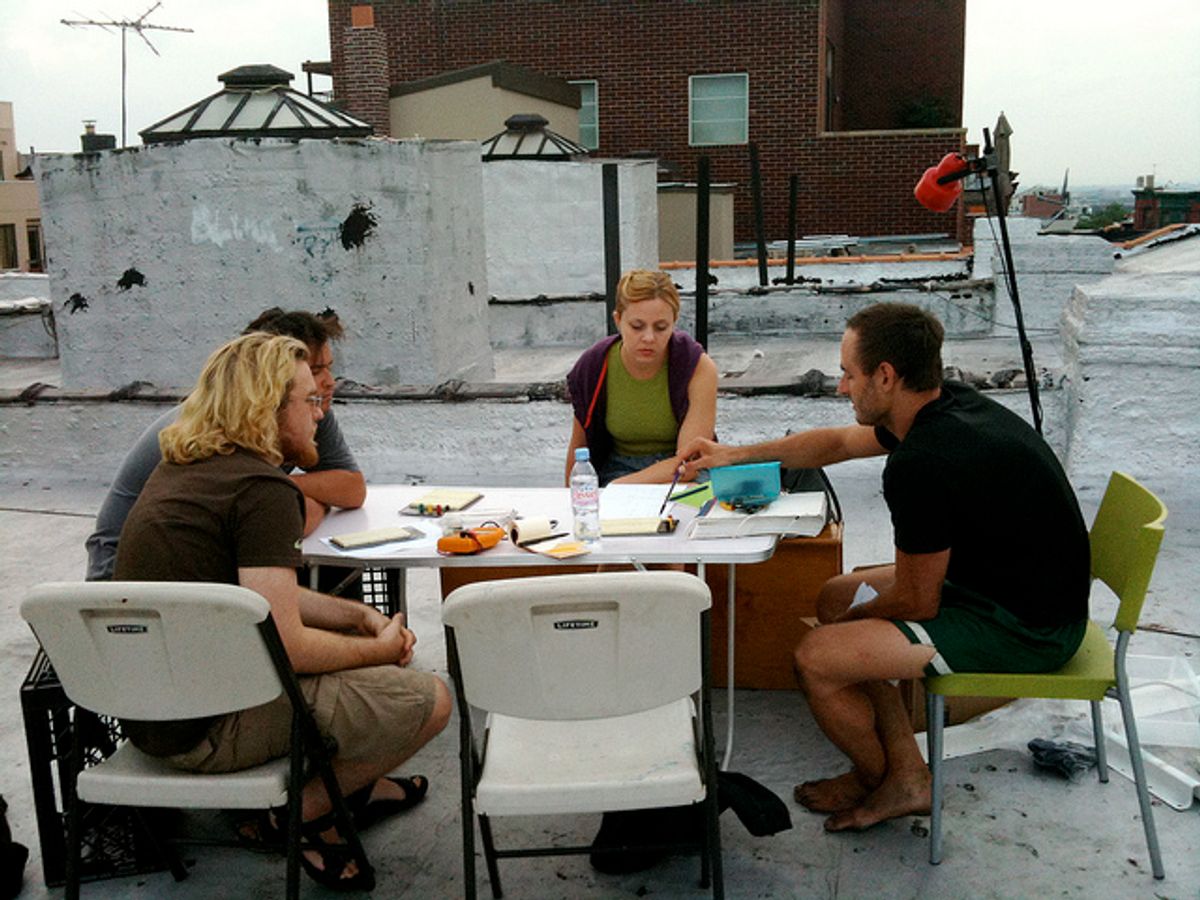When I received an e-mail early this month from the DorkBot mailing list advertising an "Intro to Robotics" class to take place on a rooftop near Prospect Park in Brooklyn, N.Y., I was intrigued, to say the least. The class description: "You'll learn and do hands on stuff, without too much theoretical crap. After this class you'll have all the basic skills and knowledge needed to start making your own robots." Rooftop robotics? Sure.
The teacher, Lee von Kraus, is a neural engineer pursuing a PhD in neurobiology at SUNY Downstate Medical Center. The class began with casual conversation, exchanging stories of Tesla vs. Edison rivalries and elephant electrocutions. Then von Kraus, who is rapaciously intelligent with a swimmer’s build and an affinity for the animal kingdom, described the fundamentals of electricity -- how voltage and current work in a circuit and the symbols for ground, switches, resistors, and so on. One student, who described himself as "more of a high voltage guy," offered an analogy comparing the flows of electrical currents to that of a river.
Now it was time for the hands-on part. The six students formed two groups and received breadboards for prototyping circuits. We learned how to use a multimeter, then connected power to a microcontroller, a BASIC Stamp module by Parallax. The microcontroller has a small, specialized BASIC interpreter (PBASIC) built into ROM. We connected it to a PC via a serial port and used its free software to program it to display “Hello World!” on the screen. In order to test the program, we connected the microcontroller to a switch circuit. We were able to see after every time we pressed a small button, the software spelled out, “Hello World!”
The two-hour long, US $30 class was a casual introduction to electronics and robotics, a perfect babystep into a world that both excites and intimidates the average human being. Though after the course you probably won't be able to hack your Roomba into a beer-fetching servant bot, at least you'd know where to start.
And you can always ask von Kraus, if he's not too busy working on his dissertation or teaching other classes, such as science for art majors, cellular biology, wilderness survival class, and night kayaking tours of NYC. He hopes his research in neurobiology will contribute to brain augmentation efforts. "We are all just circuits," he said in the end.





